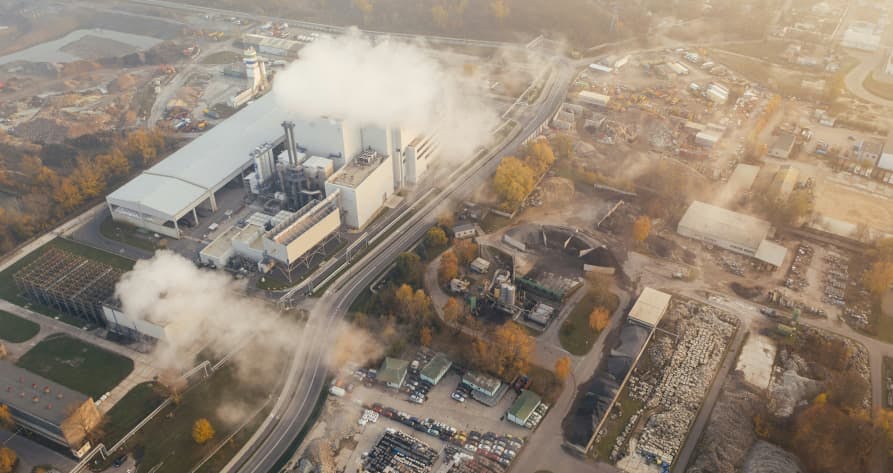
What are the 3 Pillars of Corporate Sustainability?
In this article, we'll explore what the 3 pillars of corporate responsibility are, why they're important, and how businesses can turn them into practical action.
ESG / CSR
Industries



Over 7,000 companies joined the SBTi initiative to reduce their emissions through the use of scientific data, and now – the SBTi is releasing a new framework called the SBTi net zero standard to inspire even more emission reductions.
The SBTi net zero standard refers to the efforts to reduce scope 1, 2, and 3 emissions in alignment with helping the world to achieve 1.5°C approved pathways. In addition to this, the SBTi net zero standard should seek to neutralize additional emissions as close to zero, or “net-zero” as possible.
It is more important than ever before to address the concept of net-zero emissions as companies, investors, and governments alike can get confused between the true meaning and incentive behind net-zero.
In this article, we’ll review what net zero emissions are, how they differ from the SBTi net zero standard, the main goals of the new SBTi Corporate net zero standard, the pros and cons of the SBTi net zero standard, and more.
Net-zero emissions refer to creating a balance between the amount of GHG emissions being emitted to the amount of emissions being removed – usually done through efforts to directly reduce emissions and also remove existing emissions, such as via tree planting, purchasing carbon credits, or carbon capture and storage
There are several reasons why net-zero emissions are important:
Despite the numerous benefits of seeking to achieve net-zero emissions, many companies may struggle to implement a net-zero goal. This is because it can prove challenging to manage complex supply chains, financial constraints, and struggles to re-organize their business model to remain competitive and flexible in the midst of new environmental regulations.
👉 Even if net-zero can prove confusing and difficult to implement, all companies should recognize both the individual and global value in seeking to strive towards net-zero emissions.

The main difference between science-based targets and net zero is that science based targets require scientific research and data to create an effective emissions reduction plan in line with the values depicted by the SBTi, whereas net-zero is more concerned with working towards carbon neutrality.
Think of the night after Halloween where you’ve probably eaten more candy than you wish you did. In order to compensate for binge eating sweets, you may go to the gym the next day. This illustrates the main goal of net-zero, which is to even out the current amount of emissions being produced with how many emissions are being removed or reduced.
On the other hand, approaching Halloween night with a science-based targets mindset would mean avoiding eating too much candy in the first place – such as by calculating how many pieces of candy you can afford via the amount of calories you already consumed that day prior.
Other differences between science-based targets and net zero include:
👉 Both science-based targets and a net-zero initiative are effective ways to reduce emissions, comply with environmental regulations, and meet the standards under international agreements.

The SBTi Corporate Net Zero Standard, initially released in October 2021, was developed in order to encourage greater emissions reductions in attempts to achieve net-zero before 2050 while also highlighting the importance of science-based targets.
Science-based targets, the main selling point of the SBTi Corporate Net Zero Standard, are targets created in line with scientific research and data in order to yield successful, numerically visible emission reductions.
The main goals of this new SBTi initiative include:
The new SBTi net-zero framework utilizes near-term science-based targets in addition to long-term science based targets.
Near-Term Science Based Targets which have previously been referred to as simply “science-based targets” refer to the short-term (5 to 10 year) GHG emission reduction targets which align with 1.5°C pathways. Once companies achieve their near-term targets, they must set new near-term targets which continue to work towards achieving their long-term science based target. Ultimately, near-term targets help companies to break down long-term goals into smaller, more easily achievable steps.
Long-Term Science Based Targets refer to the long-term goals set by companies to help reach 1.5°C pathways under the net-zero emissions by 2050 movement. These long-term goals are important as it helps limit companies from labeling themselves as “net-zero” until these long-term science based targets are achieved.
👉 Currently, the SBTi net zero standard is best suited for companies with over 500 employees trying to develop net-zero targets under the SBTi.

There are numerous benefits to adhering to the new SBTi net-zero standard, such as setting achievable goals to effectively reduce greenhouse gas emissions and avoid exceeding deleterious global surface temperatures – but there are also downsides to the SBTi net-zero standard seeing as the framework is best for companies with more than 500 employees.
The benefits of adhering to SBTi Corporate Net Zero Standard include:
The downsides of adhering to SBTi Corporate Net Zero Standard include:

There are several companies which have already successfully implemented the SBTi Corporate Net Zero Standard: such as American Airlines, American Eagles Outfitters, and AECOM.
Other companies committed to the SBTi Corporate Net Zero Standard include:
Several of these companies are bound to face challenges while having committed to the SBTi net-zero movement, such as Nestlé – which has to find new ways to ethically source cocoa, a difficult resource to sustainably acquire and ensure fair working practices, amongst other ingredients used to create food and drinks sold under the brand.
Luckily, Nestlé has shown that it’s more than possible to adhere to the SBTi net-zero standard – by contributing to net-zero tactics such as tree replanting, seeking to use deforestation-free ingredients in their supply chains, and committing to 5 of the 17 sustainable development goals.
Ultimately, initiatives such as the SBTi net-zero standard will continue to become the new norm – with more resources becoming available for companies struggling to implement these emission reduction tactics.
Therefore, it’s in your company’s best interest to get started with initiatives such as the SBTi net-zero standard and other efforts to reduce environmental impact.
If reading this article about the SBTi Corporate Net Zero Standard has made you interested in reducing your carbon emissions to further fight against climate change – Greenly can help you!
It can be challenging to implement initiatives such as the SBTi Corporate Net Zero Standard – but don’t worry, Greenly is here to help. Click here to schedule a demo to see how Greenly can help you find ways to improve energy efficiency and decrease the dependency on fossil fuels in your own company.
Greenly can help you make an environmental change for the better, starting with a carbon footprint assessment to know how much carbon emissions your company produces.